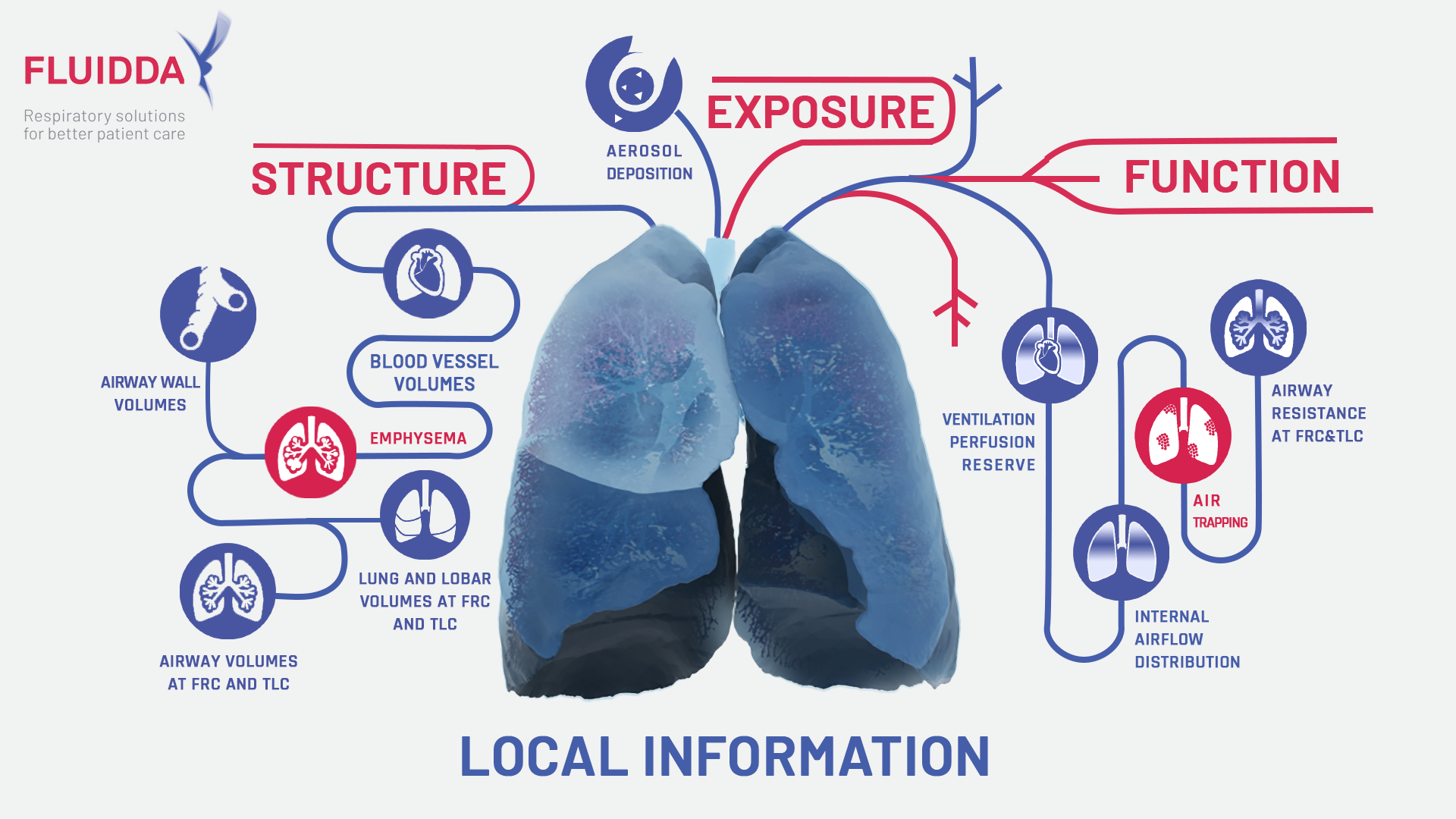FRI Biomarker Overview
The added value of FRI in treating lung diseases.
Fluidda developed a large number of HRCT-derived imaging parameters, based on its proprietary Functional Respiratory Imaging (FRI) technique, to generate very detailed information on numerous features of the lungs. These imaging parameters are of importance to help HCP’s make the right diagnosis in individual patients and in choosing the optimal therapy.
While traditional Lung Function measurements (PFTs), such as FEV1 or FVC, only provide meaningful information about the condition of the entire lung, they do not have the capability to provide regional structural changes observed with imaging. Regional information is often crucial to understand the pathophysiology of the individual patient, and to give guidance for optimal treatment. Moreover, therapeutics changes observed with FRI precede functional changes (PFT tests), and for that reason our imaging technique is often used in clinical trials to provide early evidence of the mode of action of a new compound.
Recently, Fluidda developed a fully automatic novel imaging parameter, called BVX, which analyses a patient’s pulmonary vascular bed. Evidence has shown that the pulmonary vascular bed of COVID-19 subjects is impaired, and it seems that the severity of impairment is predictive of clinical decline. As this analysis is quick, it provides physicians more information on what care the patient might need at a certain timeframe, potentially leading to a more optimized organization of hospital beds . In practice, when an HRCT scan is taken, we can allow for it to be sent to our servers for a quick assessment of the vascular impairment. The physician is provided a report of the analysis approximately 20 min later.
Our BVX imaging parameter is currently used routinely by Delta AZ hospital in Belgium.

Categorised in: Miscellaneous / November 23, 2020 11:53 am /
